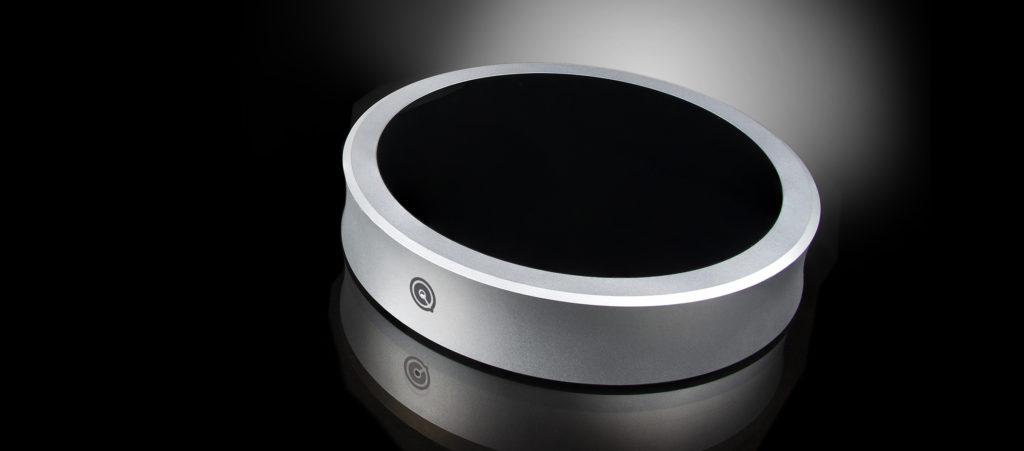At the High End show in Munich we introduced the QPOINT, the newest addition to our QRT line of products. While the QPOINT is just about to start shipping, the response and interest in this product has been overwhelmingly exciting! As is to be expected when groundbreaking technology is released, we have received several questions about the new QPOINT. We thought that we would take a minute to share some of our most recent and frequently asked questions here so that everyone can get the answers they are looking for!

First, for those of you unfamiliar with this product— The QPOINT is a Resonance Synchronizer that emits a subtle field which impacts and manipulates all electromechanical resonances within its immediate proximity so that they resonate in unison. When placed in a sound system, the QPOINT imparts this unique, metronomic effect on the internal moving parts of targeted components, lowering the system’s noise floor. This cost-effective, one box solution will yield demonstrable improvements to any component in a sound system. The audible results of introducing a QPOINT to a hifi system include enhanced coherency and greater dynamic range in the music, as well as expanded space and ambiance in musical reproduction.
How do I position the QPOINT in relation to my components?
In most circumstances, the QPOINT should be placed under the component that you are trying to affect, with the black dispersion plate pointed up, towards the component (your component may need to be supported using Sort Kones). However, the best placement is determined on a component-by-component basis. For example: If you are pairing a QPOINT with a component that is constructed using a thick, metal chassis, and a comparatively thin top covering, you will get better results placing the QPOINT on top of the component, with the black dispersion plate facing down, towards the component.
Do I need to buy a separate power cord for the QPOINT?
No, the QPOINT is supplied with its own DC power cord which is attached to a switch mode power supply. However, if you would like to significantly upgrade the performance of your QPOINT, Nordost will be coming out with a new product called the QSOURCE Linear Power Supply which does requires a separate QSOURCE DC Cable.
Which component should I use the QPOINT with for the best results?
We suggest that you start by placing the QPOINT under or on top of your preamplifier (or integrated amplifier if applicable), followed by your digital components, then your analog source, and finally your power amplifier(s). However, the results can be system dependent. You should experiment with the placement of your QPOINT to determine what is most beneficial in your unique system.

Because the Q point creates a wave and unifying vibration stronger than the natural resonance of the internal components (otherwise how would frequency unison be achieved), should I be concerned about increased component part failure rates within the audio devices? I own three of the Q points and can testify they are sonically very beneficial. Analogously, so is a turbo-charger on an engine until it fails due to increased heat and pressures on components not designed for use with a turbo-charger. I appreciate and enjoy the Q Point sonic results, but have concerns (adverse component reliability) about how the Q Point mechanically achieves its results.
Actually you shouldn’t have concern at all, simply because the QPOINT pulses are synchronizing physical movement and not usage. The pulses are making the resistors, capacitors, rectifiers, etc simply physically move in unison and therefore create less energy consumption. The QPOINT is not making the part perform harder or making more current flow through it.
Do I need to leave the QPoint on all the time?
The QPOINT only takes about 10 seconds to take effect, so you can turn it on when the component it is affecting is in use.